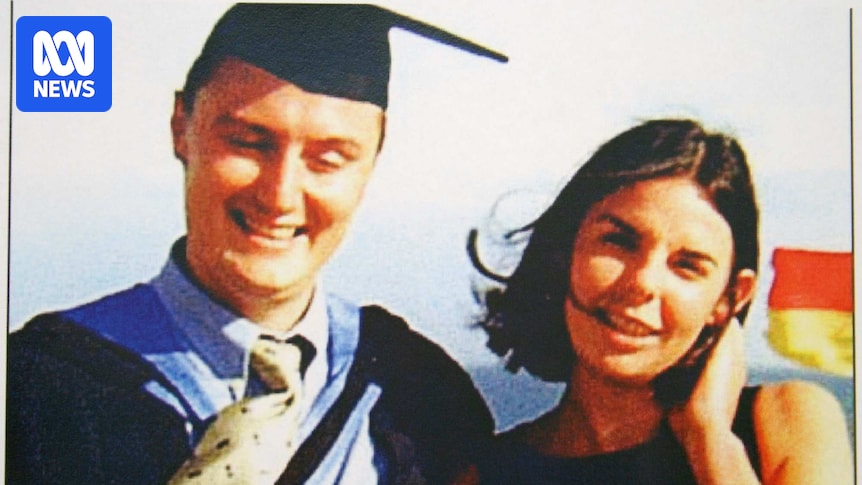
Decades after the tragic murder of British backpacker Peter Falconio, the quest to find his remains continues. Despite the death of convicted killer Bradley John Murdoch, who took crucial information to his grave, experts remain hopeful that Falconio’s body can still be discovered in the remote Australian outback.
Murdoch, who was serving a life sentence for the murder of Falconio and the attempted kidnapping of his girlfriend Joanne Lees, passed away from terminal throat cancer in Alice Springs Hospital earlier this month. His death has not deterred investigators, who are determined to bring closure to Falconio’s family.
The Challenge of the Remote Outback
According to Angela Williamson, a cold case forensics expert, the remoteness of the area where Falconio was killed presents significant challenges. “I think the biggest challenge is with where Peter was killed, [because] it is so remote,” Williamson explains. With a background in managing major forensic programs and solving high-profile cases, Williamson emphasizes that finding remains in such isolated locations is difficult but not impossible.
Williamson notes that discoveries often occur through chance encounters, such as when someone stumbles upon remains while walking their dog or during construction. “It’s a little harder in that remote area of the outback … but it’s absolutely not impossible,” she adds.
A Journey Turned Nightmare
Peter Falconio and Joanne Lees embarked on a celebratory trip around Australia in 2001, marking Falconio’s university graduation. Their journey, which began in Sydney, was meant to take them through various cities, including Canberra, Melbourne, and Alice Springs, before heading to Darwin. However, their adventure took a dark turn on July 14, 2001, when they encountered Murdoch on the Stuart Highway.
After stopping to investigate alleged sparks from their van’s exhaust, Falconio was never seen again. Lees heard a loud bang, described as “like a car backfiring,” and managed to escape into the scrubland. Murdoch was later convicted for the crime, but the whereabouts of Falconio’s remains remain a mystery.
Murdoch’s Elusive Secrets
Despite numerous appeals for information, Murdoch died without revealing where Falconio’s body was left. In 2005, a court heard that Murdoch had placed Falconio’s body in his ute and disposed of it somewhere between Alice Springs and Broome. The Northern Territory Police Force has offered a $500,000 reward for any information leading to the recovery of Falconio’s remains.
Dr. Williamson highlights the challenges investigators face in determining how the body was disposed of. “Was it what we call a surface deposit? Was he literally just dumped somewhere?” she questions. The harsh Australian environment, along with potential animal predation, complicates the search further.
Tracking Murdoch’s Movements
After the attack, Murdoch fled with the van, which was later found abandoned along the Stuart Highway. Despite extensive searches, no blood was found inside the vehicle, although DNA samples linked to Murdoch were discovered on the gearstick. Murdoch’s movements following the crime were meticulously tracked, with CCTV footage capturing him at a truck stop in Alice Springs.
Friends and acquaintances of Murdoch noted changes in his appearance and vehicle upon his return to Broome. The police continue to explore potential locations Murdoch frequented, hoping to uncover clues about Falconio’s final resting place.
Hope and the Promise of Answers
In a statement, Peter Falconio’s parents, Luciano and Joan Falconio, expressed a sense of relief upon hearing of Murdoch’s death, yet they remain hopeful that their son’s remains will be found. “Our family’s future with Peter was cruelly taken away,” they stated, emphasizing their enduring hope for answers.
While some seek “closure,” Dr. Williamson cautions against using the term, noting that it is a deeply personal concept. “It’s often not really closure because that person is still gone,” she says. Instead, she focuses on providing families with answers and a sense of justice.
The ongoing investigation, led by former NT Police officer Colleen Gwynne, continues to seek information from those who may have knowledge of Murdoch’s actions. The introduction of “no body, no parole” legislation in 2016 aimed to compel Murdoch to cooperate, but he remained silent until his death.
Dr. Williamson emphasizes the importance of bringing Falconio home to his family, driven by a commitment to help people and provide answers. “We do this work because we want to help people, we want to provide answers, we want to bring people home,” she says, underscoring the profound impact of resolving unsolved cases.







